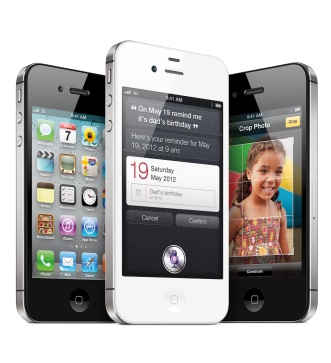Driven by increased demand from developed regions for high-end models, along with an unexpectedly strong push from emerging economies for lower-cost products, smartphones are expected to rise to account for the majority of global cellphone shipments in 2013 — two years earlier than previously predicted, according to iHS iSuppli (www.isuppli.com).
Smartphone shipments in 2013 are forecast to account for 54% of the total cellphone market, up from 46% in 2012 and 35% in 2011, according to an “IHS iSuppli Wireless Communications Market Tracker Report” from the information and analytics provider. The year 2013 will mark the first time that smartphones will make up more than half of all cellphone shipments.
“This represents a major upgrade for the outlook compared to a year ago, when smartphones weren’t expected to take the lead until 2015,” says Wayne Lam, senior analyst for wireless communications at IHS. “Over the past 12 months, smartphones have fallen in price, and a wider variety of models have become available, spurring sales of both low-end smartphones in regions like Asia-Pacific, as well as midrange to high-end phones in the United States and Europe. The solid expansion in both shipments and market share this year of smartphones will make them the leading type of mobile phone for the first time, and shipment growth in the double digits will continue for the next few years.”
By 2016, smartphones will represent 67.4% of the total cellphone market.
While still accounting for less than 50% of the market this year, smartphones will become the single largest cellphone segment by the end of 2012, surpassing feature phones.
The rise of smartphones to a plurality share this year means a fall from grace for feature phones, which are a grade above the most basic, low-cost entry-level phones but lack the sophisticated engineering and abundant functionality of smartphones, according to iHS iSuppli. Feature phones commanded the wireless market as late as last year with 46% market share, but their portion will decrease to 41% this year, setting a trend of irreversible decline and progressive weakening in their numbers.
By 2016, feature phones will be confined to a market share of 28% — less than half the share of smartphones by that time. A third type of phone, the entry-level and ultra-low-cost handset, will occupy the bottom tier of the market with approximately 14% share this year and end up with just 4.2% share by 2016, says iHS iSuppli.
As smartphones become ever more popular and affordable, they will become the focal point of the handset industry, IHS believes. Smartphones will deliver multifunctional capabilities that enhance experiences, while at the same time providing a hardware venue toward increasing average revenue per user, made possible through the extensive data use of smartphone owners.
Growth of the mobile applications development industry, which turns out innumerable applications on a variety of smartphone platforms, will also help maintain the continuing importance of the smartphone segment.
The smartphone market is, in fact, made up of two segments — the midrange to high-end smartphone on the one hand, and low-end smartphones on the other. Already, manufacturers are introducing affordable low-end smartphones equipped with lower memory densities and a more limited feature set into developing countries and emerging markets, encouraging in these regions the use of data plans, which drive greater revenue. Low-end smartphone users will likely be first-time smartphone consumers, and will represent 43% of the total smartphone market by 2016, according to iHS iSuppli.
In comparison, the midrange to high-end smartphone segment consists of users in the developed countries or in the more industrialized urban areas of some developing nations. This group of smartphone users will continue to outnumber their low-end smartphone counterparts, with more than 700 million midrange to high-end smartphone users forecast by 2016, says iHS iSuppli. Apple and Google, now the two leading smartphone platforms, are the leaders in the space.

